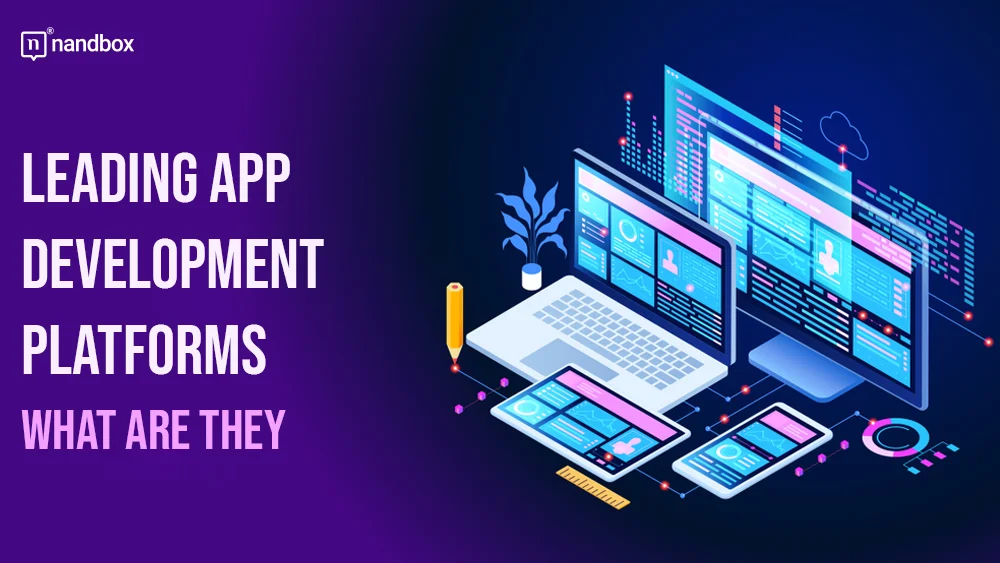In today’s mobile-first world, apps are emerging as the new frontier for businesses. From simple tools to complex marketplaces, apps have the power to transform the way we work and live daily. But how do you go from a brilliant app idea to a reality? I know that thinking about it can make you feel a bit overwhelmed. But in this technological era, there is a solution for everything. In this guide we will discuss all about the leading app development platforms that you can leverage in 2025.
That’s where app development platforms come in. These powerful tools streamline the process of coding, designing, and deploying apps. They simply make it easier than ever to bring your vision to life. It doesn’t matter whether or not you have previous experience in the app development market. These platforms are for everyone. In this article, we’ll explore the top app development platforms on the market. We’ll uncover their unique strengths, weaknesses, and the types of apps they’re best suited for. Upon completion, you will possess the necessary skills to select the appropriate platform and initiate the development of your app empire. So, are you ready to dive deep into this topic with me? Let’s go.
Leading App Development Platforms: What Makes a Great App Development Platform?
Okay, now that you know there are many platforms, the variety can be overwhelming. It is crucial to understand the factors that contribute to the success of an app development platform. That is why I am here today to explain to you what makes a fantastic app development platform. Let me assure you, the key lies in the features offered. A powerful app development platform should be one that offers customization options that meet your expectations and app development needs.
It should offer you scalability to grow alongside your business and user-friendly tools that facilitate the process of building apps and make it more intuitive than ever. The special thing or factor about these platforms (no-code ones) is that they help beginners or citizen developers in creating an app without having to have any coding experience. It’s all about how simple their drag-and-drop functionality is. All you have to do is choose a template, navigate your way around it, and start customizing it. This is a simple process that helps you create an app in no time and without facing any hassles.
Another thing that I love about these app development platforms is the fact that they can help empower your app with third-party integrations. Moreover, you’ll gain access to robust and excellent analytics without having to write a single line of code. Another excellent thing that these platforms offer is support and having your own no-code or low-code community to belong to. What does that mean, though? This implies that if you encounter a technical issue or require assistance with any aspect of the app builder, a supportive ecosystem is available to provide you with assistance and expert advice.
Take nandbox’s platform, for example. With this platform, if you build an app and need help, all you have to do is contact the support, and they will be able to help you out through your issue and get it fixed within 24 hours and not more. This is an essential and crucial feature for any platform you choose to develop your app on. This is because you can rest assured that you will find the support and help you need when you encounter obstacles or problems.
Leading App Development Platforms: A Comparative Overview
With countless options available, narrowing down the best app development platforms can feel overwhelming. That is why our blog offers a guide for the market’s best no-code mobile app development platforms. But if you would like to have an overview, let me narrow things a bit for you. Here are the top three app-building platforms that can help you create an app seamlessly and without facing any coding or programming challenges:
- nandbox: A native no-code app builder, perfect for businesses seeking customizable, feature-rich apps without coding knowledge.
- OutSystems: A leading low-code platform known for its speed and scalability.
- Flutter: A traditional development platform ideal for high-performance apps with rich graphics.
Each platform serves different needs. While no-code solutions prioritize simplicity, traditional platforms offer unmatched flexibility for advanced applications. The choice depends largely on your project requirements, technical expertise, app vision, needs, and budget. When you understand your needs in app development, I assure you that you will be able to choose your option wisely.
Exploring No-Code Solutions: The Democratization of App Development

No-code platforms significantly transform the landscape of mobile app development. This is especially true for startups and small businesses. Why? That is because they eliminate the biggest barrier to app creation, which is the process of coding. With platforms like nandbox and Bubble, users can create apps by simply dragging and dropping elements.
What makes these platforms even more appealing is their affordability. They reduce development costs by removing the need for a dedicated development team. Additionally, no-code tools empower entrepreneurs to iterate and improve their apps in real time, responding to user feedback faster than ever before. All you have to do is subscribe to one of the plans that you get offered by these platforms and start your app development journey. For example, nandbox allows users to integrate features like chat functions, booking systems, and e-commerce stores seamlessly. We often refer to no-code platforms as “the future of app development.” That is because they open up new portals for us and broaden our app development horizons. Now that we’ve covered no-code solutions, let’s understand more about low-code platforms and what they have to offer.
Low-Code Platforms: Bridging the Gap Between Simplicity and Flexibility
Low-code platforms strike a balance between the ease of no-code tools and the power of traditional development. These platforms cater to businesses that need slightly more customization than no-code can offer. It’s not about the limitations of no-code solutions; this is all about having more options. Think of low-code as the middle ground: intuitive enough for non-developers, yet flexible enough for experienced coders to add advanced functionality. It’s the definition of balancing out your options.
Platforms like OutSystems and Mendix are excellent examples to start with. They enable businesses to accelerate their app development process while maintaining control over the app’s core architecture. This is particularly useful for medium to large enterprises that have specific workflows or integrations in mind but want to save time and resources. Also, these platforms work best for someone with a complex or medium-complexity app idea. With low-code, you’re not just building apps; you’re actually building them faster and smarter.
Leading App Development Platforms: Traditional Development Platforms
Despite the emergence of no-code and low-code platforms, traditional development continues to be the preferred method for intricate, feature-rich applications. But why do a lot of people prefer to traditionally develop an app? These platforms offer developers unparalleled control over every aspect of the app, from the back-end architecture to the smallest design details. Sometimes you can face a bit of a challenge in communicating your app vision with developers, but hey, I guess it’s all about choosing the right development team for your application development process.
Take Flutter, for example. This platform is a favorite among developers building high-performance apps for gaming or media streaming. However, traditional platforms require extensive coding knowledge and longer development timelines, making them less accessible for non-technical users. For companies with large budgets and a clear vision, traditional development platforms are worth the investment. Yes, they will invest a lot of money in an app indeed, but it’s all about creating the right budget for your development journey. That is because they ensure every feature works exactly as intended and provide endless possibilities for customization.
Wrapping It Up!
The world of app development is diverse, with platforms catering to every skill level, budget, and business goal. It doesn’t matter whether you’re experienced or just a novice looking forward to dipping your toes in the sea of app development; there is an app development solution for everyone. The choice ultimately depends on your specific needs and vision, ranging from no-code simplicity to the flexibility of low-code and the power of traditional platforms. If you’re looking for a hassle-free way to build a robust, feature-rich app, nandbox’s native no-code app builder is your ideal partner. With its intuitive interface, customizable features, and comprehensive support, nandbox empowers you to turn your ideas into reality without breaking a sweat. Why wait? Start building your dream app today!




